Many of us have been bored in class at school and passed the time doodling with a pen or pencil, filling in the corners of textbooks or notebooks with freehand drawings of different shapes. Usually it starts with circles, squares, triangles and other geometric shapes, or organic shapes such as vines, leaves and flowers, or maybe some abstract shapes and lines, and if the imagination takes flight some draw characters and illustrations. We scribble and draw just to pass the time or even stay awake during class or at work meetings, unaware that what we are doing is a form of art. Doodling is in fact recognised as an artistic medium globally called “doodle art”. Many competitions are held for this art form, and many people do it professionally.
Doodle art is a drawing that allows for creativity and spontaneity. It typically features abstract or semi-abstract designs created quickly and spontaneously, often with a pen or pencil. The lines and shapes are often playful and fluid and they may consist of patterns, shapes and symbols. Doodle art can be created in various styles, from simple sketches to more detailed and complex drawings. Some doodles may be fun, while others may be more serious and meaningful, depending on the artist and their intent.
As it is a freehand drawing technique, doodling doesn't require any training or classes. It is accessible to anyone, regardless of artistic experience or skill level. It requires no special training or equipment. Anyone who can hold a pen or pencil can doodle. It can be a fun and easy way for people of all ages and backgrounds to express themselves creatively. Many people enjoy doodling to relax and unwind, while others use it for brainstorming and problem-solving. It can be done in a notebook, sketchpad, or even on a napkin, and it can be created using various materials, such as pens, pencils, markers, and paint. Doodle art is also excellent for children to hone their fine motor skills and hand-eye coordination.
Many doodlers start at an early age having recognized this as art when commonly it is considered as idle scribbling. The designs may begin with a specific idea or concept in mind and then develop it as one draws. Some start with a random shape and then build on it as they go along. You can begin doodling in many ways: experimenting with different materials, sketching, copying existing doodle art, taking inspiration from everyday objects and scenes, learning the basics of composition and design, and then practising regularly to improve.
In Pakistan, where we have a rich tradition of art and crafts, doodle art is gaining interest as a new way to express creativity. In addition, the rise of social media and online communities has made it easier for people to share their artwork and discover new styles and techniques, contributing to the growth of this art in the country.
There are very few doodle artists in Pakistan, but the art they do is no less than any other in the world, whether on a small piece of paper or a huge surface. For many doodle art is merely a hobby, and others find it inspiring enough to take it up as a profession. We talked to two doodle artists to get a sense of where this art form stands in Pakistan.
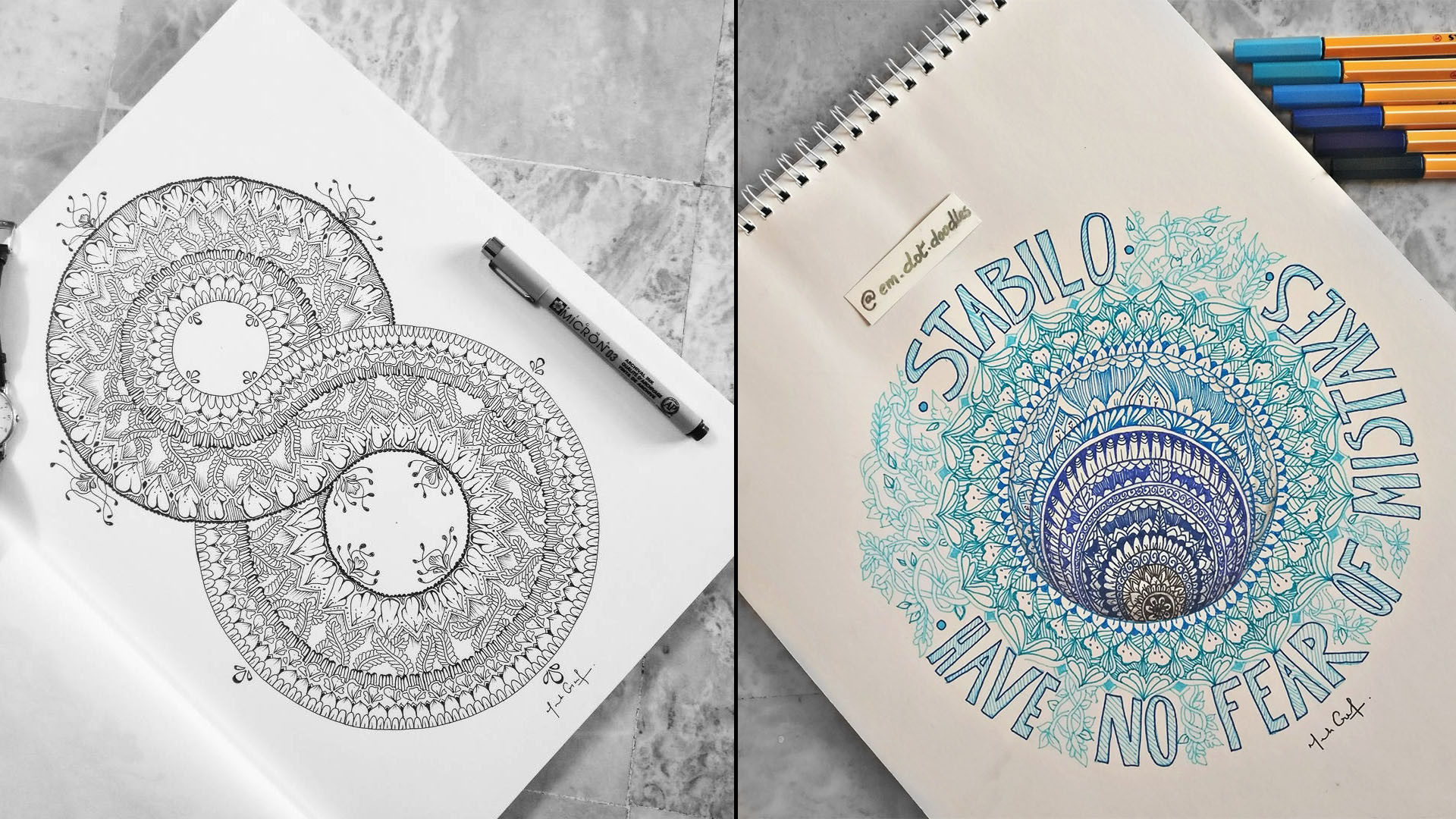
An accessible form of art
Mominah Arif is an Islamabad-based artist. She began by drawing small drawings at the edge of her notebook during boring classes and lectures. She remembers watching her father drawing shapes at the edge of the phonebook while speaking over the landline phone. "It wasn't recognized as art until we reached the art school,” Mominah says. “Earlier, the teachers used to ask not to do it as it was considered a distraction."
Some artists are inspired by everyday objects or scenes, such as nature, architecture, or even a random pattern on a wall, and use that as a starting point. Additionally, some artists may take inspiration from other art forms such as illustrations, comics, or graffiti.
Another way that doodle art designs come to mind is through prompts or exercises. Artists may use prompts such as a word, phrase or image as a starting point and then create a doodle art piece based on that. This can be an excellent way to kickstart creativity and explore different styles and techniques.
Ultimately, the process of creating doodle art designs differs for everyone and can be influenced by an artist's personal experiences, interests and emotions. For example, some artists may plan and sketch their designs beforehand, while others prefer to work more spontaneously.
Hasan Daniyal Lashari, an architect who's been drawing for the past 12 years, got inspired to doodle when his friend took part in a competition. Since then, he has made doodle art, mainly in architectural drawings of imaginary landscapes. "Initially, there were more tribal things like tribal symbols or something like that,” Hasan says. “Eventually, it became something else as it kept evolving. But after I came to architecture school, because we were given formal drawing training, we were encouraged to make drawings rather than doodles."
"So automatically, the transition happened, and I was then making drawings of ideas that I was getting about buildings or things that I wanted to make. So all those doodles then started to change into drawings," says Hasan, whose work was exhibited in 2020 at the World Bank Islamabad office as part of their fifth exhibition highlighting emerging artists.
Doodle art only requires a little practice. Arif says that when you start out, you can express whatever you're trying to think of. "It's not made with any purpose or intention initially, it just grows organically as you keep drawing. So whatever you make can be considered doodle art. But sometimes, the complexity of the drawing will increase or its size will become huge.”
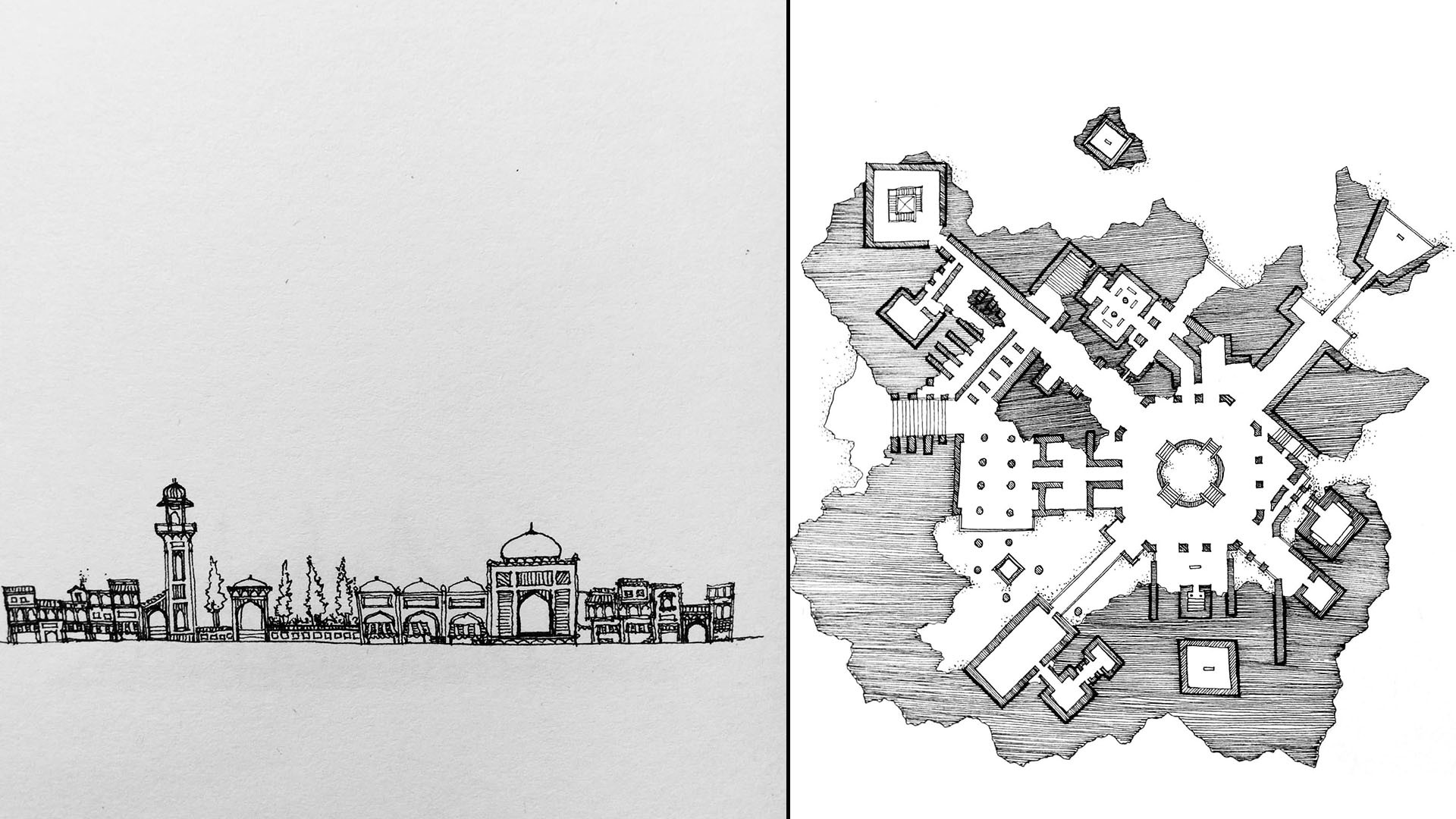
Time well spent
The amount of time it takes to create a doodle art piece can vary widely, depending on the complexity of the design and the level of detail desired. Some simple doodle art designs can be created in just a few minutes, while more complex designs may take hours or even days to complete.
The time it takes to create a doodle art work depends on the artist's speed and experience. Some people may be able to develop a detailed art work in a short amount of time, while others may take longer to create a similar design. Ultimately, the time it takes to make a doodle art piece is less important than the enjoyment and satisfaction that the artist experiences while creating it.
Hasan has done works that have taken five minutes, and then he has done jobs that have taken more than 120 hours or even two months to finish because they were so big or complex. He draws more than four times a week. "I can make small drawings in 30 minutes. I might not have enough time, but it gives me a release, so I do that. But sometimes I embark on larger, more ambitious projects, and they can take, maybe up to four weeks, depending on the complexity, the size, and so on," he adds.
Another artist, Nida Liaqat who is a fashion designer by profession and teaches photography and fashion illustration says that she does Doodle art depending on the mood. "Sometimes I do it to relieve stress or sometimes when I don't have anything to do. I am a photographer too and I have one a5 sketchbook and pencil and fine liner set in my camera bag so when I m waiting for my client, I make doodles," said Nida.
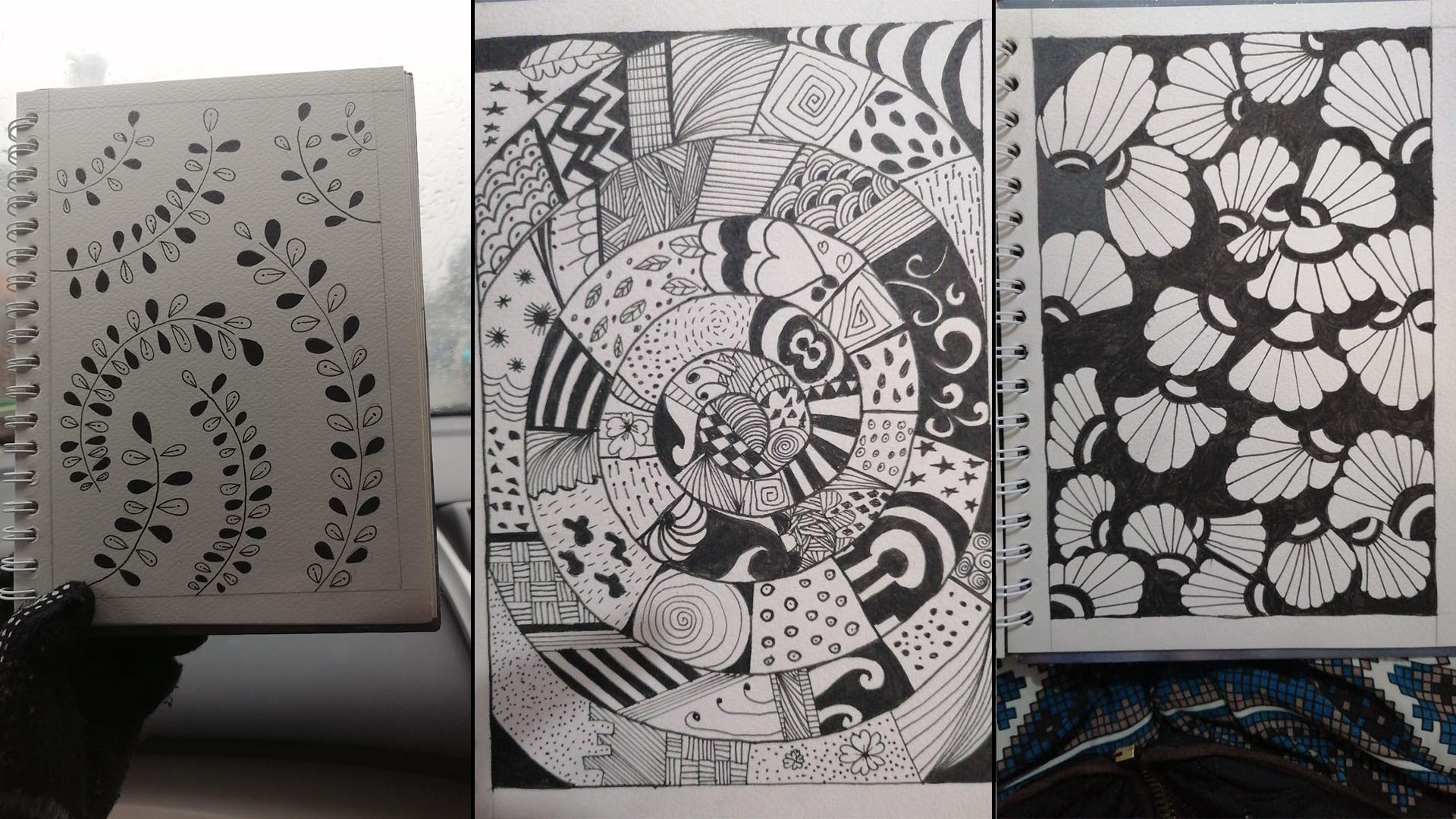
Do as you please
Doodle art is very free-flowing and very casual. You could technically use anything. You could use pens, pencils, markers, coloured pencils and even paints. So, any kind of technique that you're comfortable with or style you're comfortable with can be used. Many artists combine and adapt these techniques to create their own unique style.
Some techniques and styles include zentangle, freehand, sketching, scribbling, stippling, line drawing, vector art, lettering and calligraphy, collage or mixed media.
Nida says her curiosity got her to learn new techniques. She started searching for different types of techniques used in doodle art and tried many. Some of the ones she uses are Zentangle, Zendoodling, Stendoodling, and Mandalas, but she believes that Doodle techniques are simple drawing lines, circles, and shapes or may just be composed of random and abstract lines.
Hasan believes that all types and styles can be used in doodle art. "Doodle art is all-encompassing, so you can have people making anything from pictures of people or caricatures of them or making GB figures or landscapes or whatever strikes your fantasy. So as an artist, [you choose] whatever you feel will best express what you are thinking or making at that time," he said.
He works mainly on the landscapes in Doodles. "When I became an architect, I had spaces that I wanted to express in my mind,” he says. “When I graduated from architecture school, I didn't like the spaces that kept coming, but there weren't as many opportunities to express those spaces because architecture is dependent upon commissions by clients. So whatever the clients needed was very different from what I dreamt up. So I found this as an outlet to express the sorts of ideas that I was getting throughout my education and beyond as well. So sometimes it's more landscape-oriented, sometimes experimentation with scale. Sometimes it's experimentation with perspective, isometrics, technical drafting or different techniques," Hasan says.
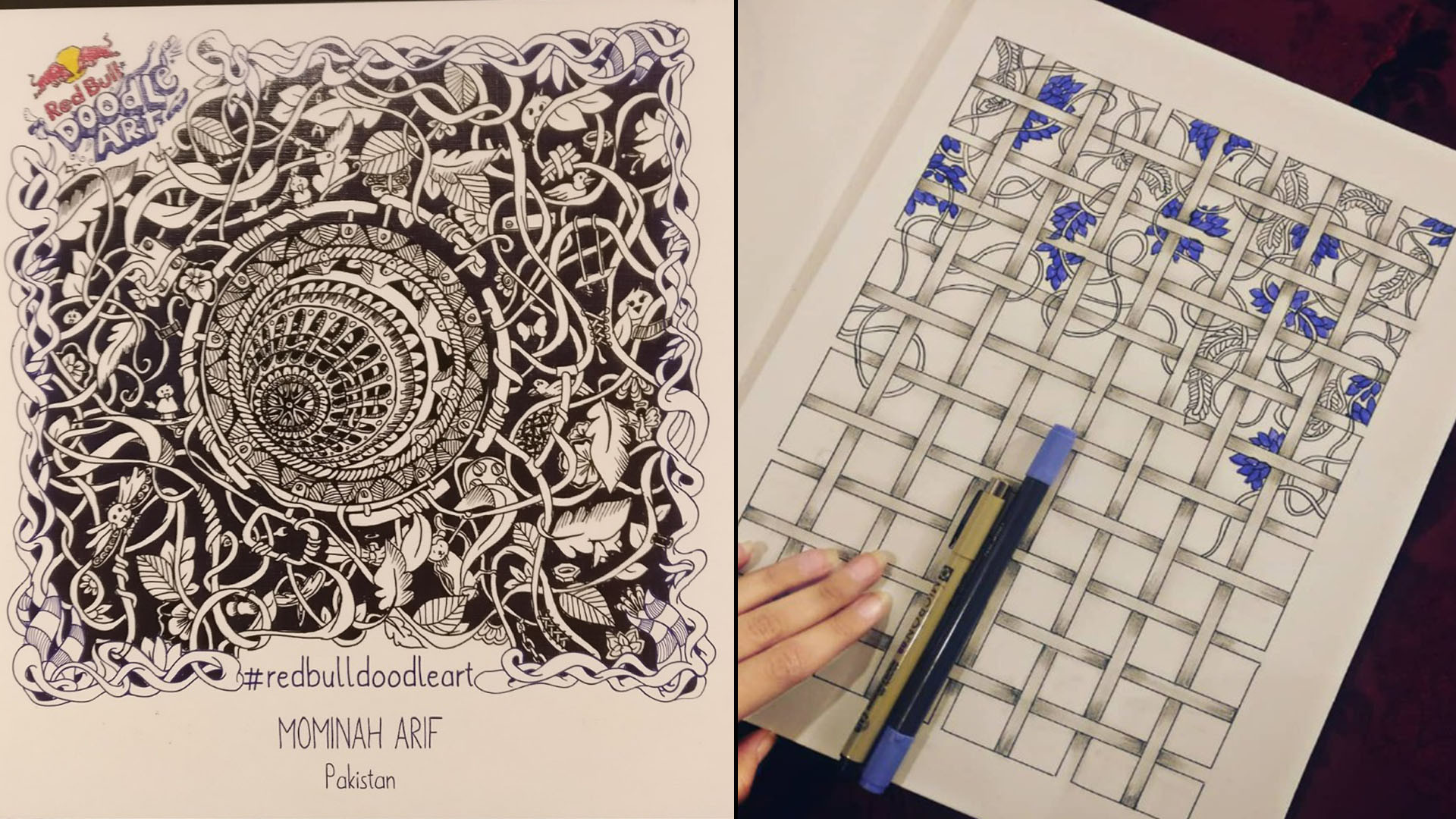
Competitions and popularity in Pakistan
Although Pakistan is rich in art, this type of art has gained little popularity. Currently, there are no local doodle art competitions but the international Red Bull Doodle Art competition is a platform where our local artists have represented Pakistan on a global stage.
Mominah won the first edition of the Red Bull Doodle Art in 2017. This year, the second edition will be held in Pakistan during the fourth edition of the global competition. The competition was a learning experience for Mominah. "A major thing I learned was that doodle art is a major art form, and it's not just something random that you do,” she says. There were workshops for other areas of art under the umbrella of the competition. “One was a graffiti workshop that was also pretty cool. I hadn't tried graffiti before, and I realised that it's very similar to doodling because you hold this break and just start doing it, and you don't get to erase stuff," she shares.

"Then we also learned how art can be intermixed with virtual reality. And that was really cool, the way we got the opportunity to draw art, make art within the virtual reality frame," she explains.
"We have always seen art as 2D that you can paste or hang on a wall or frame it. But having art as a 3D thing all around you in an immersive experience, virtual reality was literally out of the world. And I think that was the most awesome thing I've ever done," she says.
Mominah says even now, in some schools, doodling is considered a distraction and something that students and kids should not be doing. "I remember many of my teachers, even in art school, who told me not to draw on my notebooks and to focus on the lecture. But the thing is that doodling was what kept me focused on the lecture. People are starting to recognize it as an art form and as something that is good for the mind. And now things are looking a little brighter," she says.
Saman Maudood, the Media Network Manager at Red Bull Pakistan, says, "By taking part in Red Bull Doodle Art, participants have the chance to showcase their artistic skills and potential to the world.”
"There are many amazing artists and doodlers in Pakistan. Hence, Red Bull Doodle Art is a platform for these upcoming artists to hone their artistic skills, empowering them through the addition of technology in the form of NFTs. This is exactly what artists need."
She adds that doodle art has the potential to grow by leaps and bounds. "The art community is growing day by day, along with new forms of art which are becoming popular in Pakistan. The beauty of doodle art is that anyone can do it. We all have doodled at least once in life. Whether you are a finance student or a medical student, doodling opens up the imagination," she says.
There is no limit to the number of participants in the competition. "The competition is more of a student project, encouraging university students to unleash their inner artists and make the most of this creative opportunity through the platform," she adds.
This year, the finalists confront a new technological realm: Blockchain and Artificial Intelligence (AI). The jury will select the Pakistani winner based on creativity, artistry and love for life. The competition also adds new features available for everyone on the internet to use Non-Fungible Tokens (NFTs), wallets, smart contracts, DAOs and contextual content.
1675582521-0/Mominah-Arif-Red-bull-doodle-art-(11)1675582521-0.jpeg)
AI in doodle art
The Red Bull competition this year is being held on the theme of Artificial Intelligence (AI), but how is that used in doodle art? Well, it can be used in various ways to create and enhance doodle art, including generative art, which is artwork created by an algorithm rather than a human. This can include doodle art based on specific parameters, such as colour, shape or movement. Then it can be used for image recognition and processing. AI can analyse doodle art and recognise different elements within the image, such as lines, shapes, and colours. This can then be used to enhance the appearance or create new artwork.
It can also help in making complex designs repeatedly. Automating the process can automate repetitive tasks, such as creating patterns or filling in areas of a doodle. This can save artists time and allow them to focus on other aspects of their artwork. Another way is to create personalised art based on specific parameters, such as an individual's preferences or characteristics. It can also be used to develop interactive doodle art that can be manipulated by the viewer.
However, some artists believe that AI kills the fun of art. "You do get a good result. But the whole fun of making art is that you make it. So, taking the making out of it gets really boring. So it's good to get inspiration from, and it's good to get your ideas on, and good to see speedy results. But if you want to enjoy the process, you definitely have to use no non-AI methods," Mominah says.
Hasan says that the recreation of a Doodle mural or a Doodle collage would be challenging for AI now. "Even if it does manage it, and it can, probably, it would be devoid of meaning. So, like all art, doodle art is a product of the way the artist is thinking and a reflection of who they are as a person. Any work done by AI would be devoid of personality," he explains.
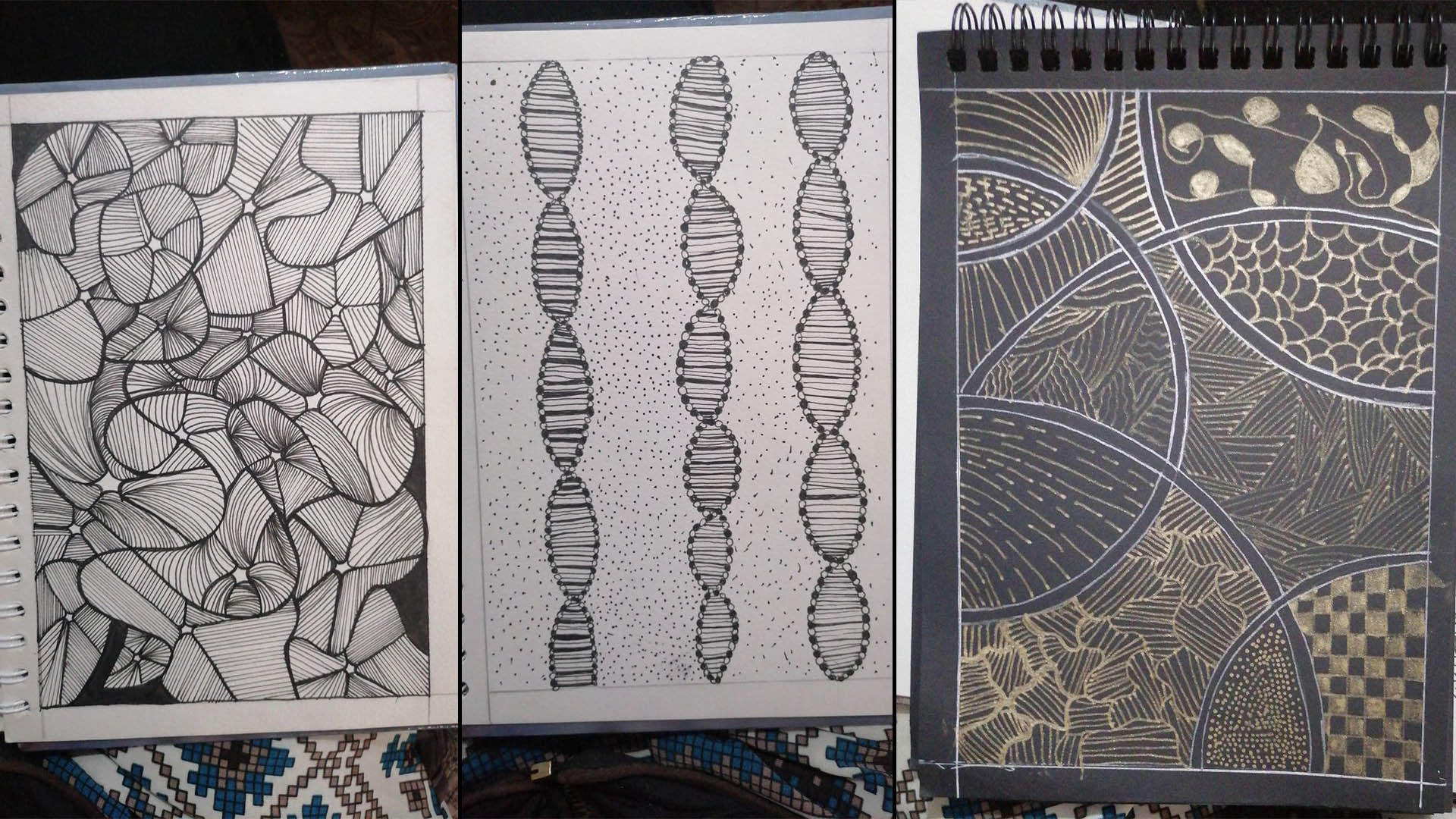
Doodle art as a profession
Lashari believes there is still room to be made for doodle art to be considered as a commercial enterprise. "You're mostly asked to make small, rudimentary pieces of art where they just give you a marker and tell you to go finish a wall in, like, an hour or two. I don't think there's a lot of understanding regarding the work process.”
For professional doodle artists, it is the primary art form they practise. These artists may create doodle art pieces for various purposes, including commercial projects, commissions and personal projects. In addition, professional doodle artists may be hired to create illustrations, logos, graphic designs, and other forms of visual content. They may also sell their doodle pieces as prints or original works of art.
To turn doodle art into a profession, it is vital to develop your skills, build a portfolio, and market your work effectively. You may also need to learn about the business side of the art world, including pricing, contracts and taxes. However, with hard work, dedication, and a willingness to learn, anyone can turn their love of doodle art into a successful and fulfilling career.
Mominah says, " There are a lot of things that require doodle art. For instance, T-shirt designs and notebook designs. There are a lot of designs that require free drawing and doodles and art of that sort."
